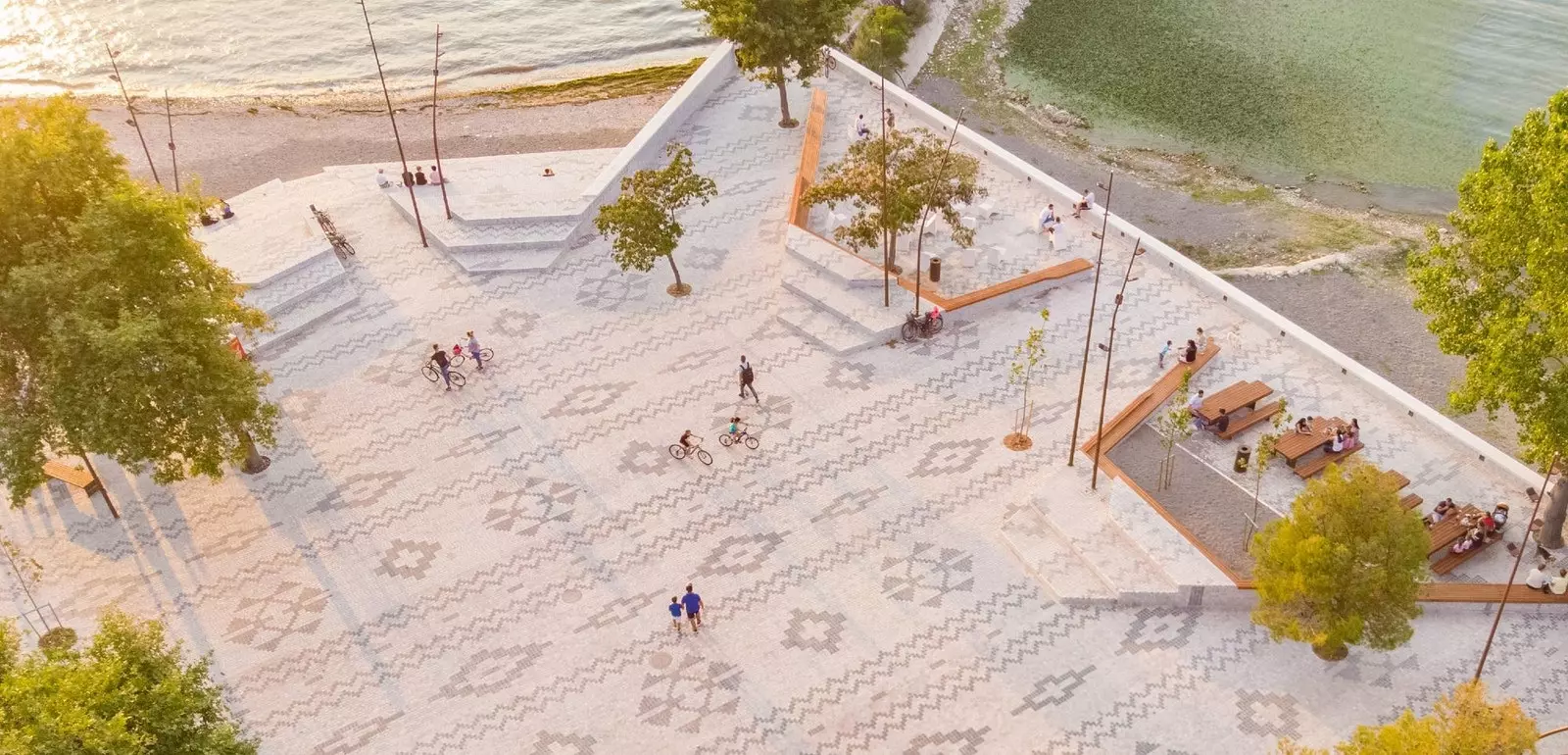
A huge granite tapestry covers Shiroka's waterfront
Fishing is part of the Shiroka tradition , a coquettish town that rises on the shore of the Albanian lake of Shkodra , near the border with Montenegro. For centuries the inhabitants of this small town dedicated themselves to fishing, garden cultivation and carpet weaving.
With the establishment of the communist regime, citizens had to abandon any autonomous economic activity, which gave rise to a period characterized by uncontrolled occupation and the privatization of public space.
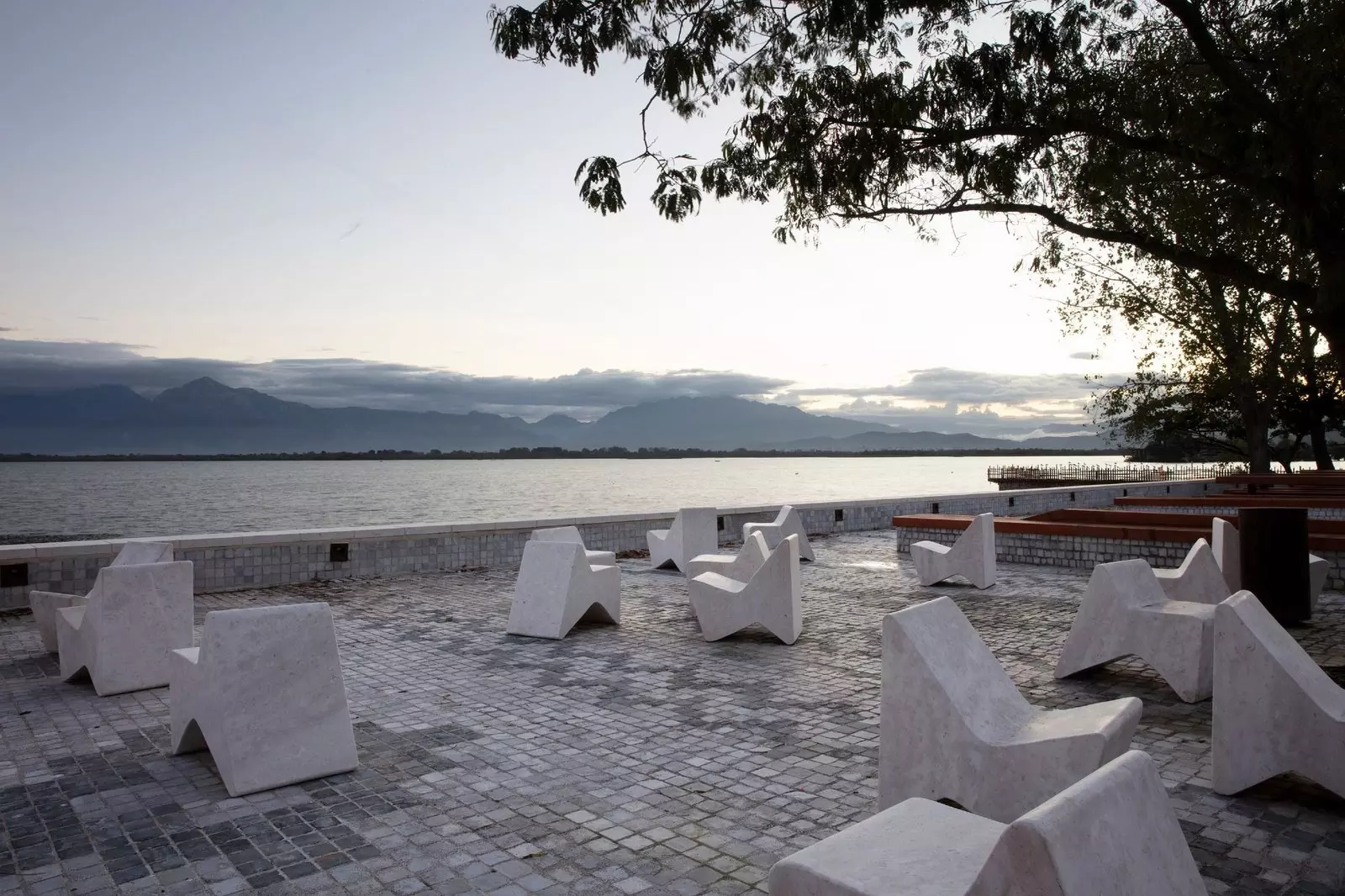
'Albanian Carpet': a meeting point overlooking the lake
In this way, the shore of Lake Shkodra was busy with illegal constructions such as houses, restaurants, private parking areas and kiosks.
As an ode to the past of this beautiful corner of Albania, the Dutch architecture studio Casanova + Hernández has devised 'Albanian Carpet', a project that arose with the aim of ending these illegal buildings and return the "waterfront" promenade to the people of Shiroka.
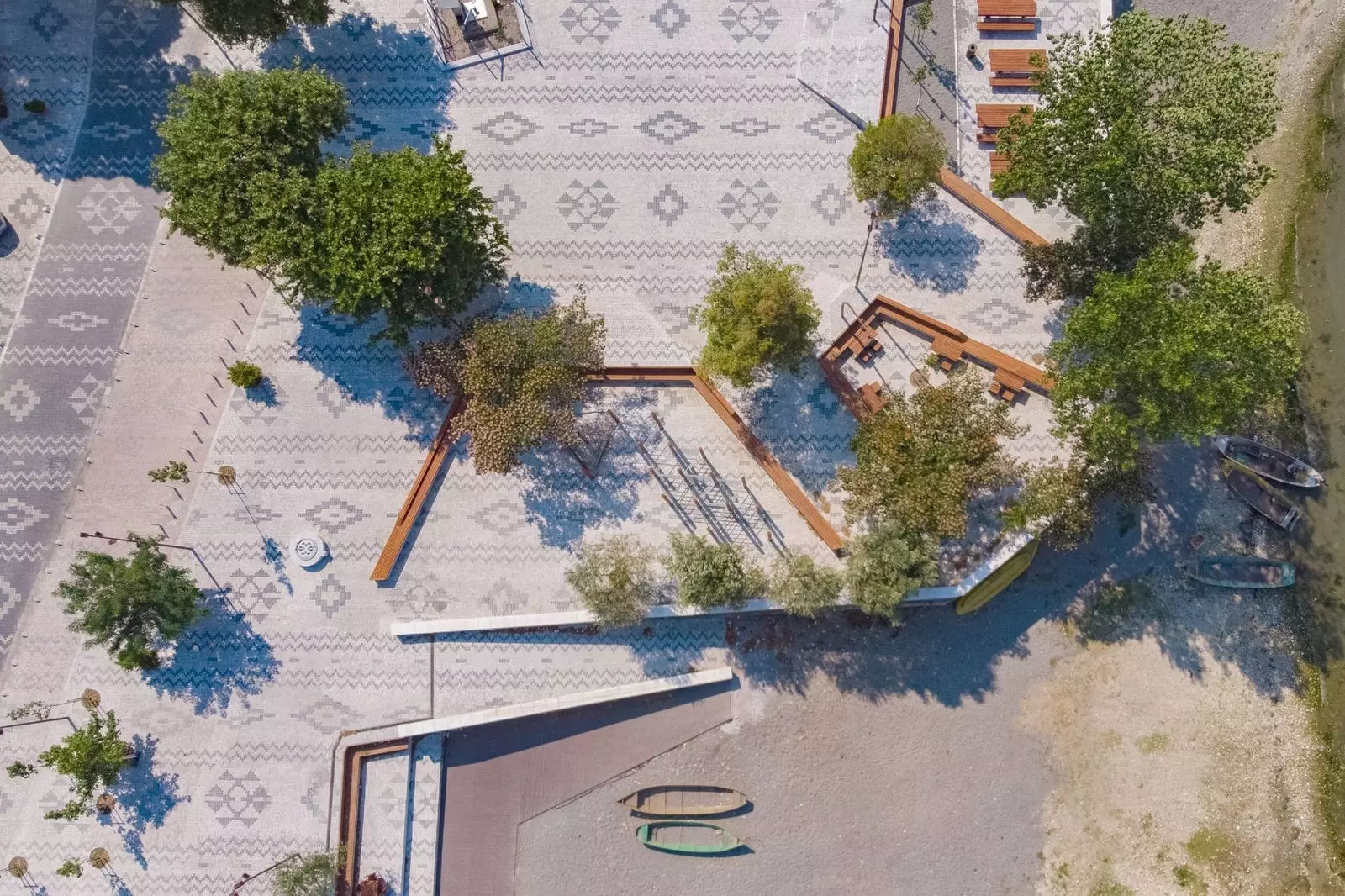
The space will have rooms open to the environment
In addition to recovering inspiring views of the lake , creating a living public space with a domestic character, 'Albanian Carpet' has rescued in 30,000 square meters the spirit of belonging and attachment to the earth from town.
For this, having a design that honored tradition was more than necessary: black and white granite tiles that cover the Shiroka boardwalk, as well as the seats and steps, are still the traditional pattern of Albanian carpets.
On the other hand, the space is conceived as a large house made of different open rooms inspired by la Oda, a typical Albanian estancia which is characterized by having a long, low bench in the shape of a "U" where family members sit and lie down.
The compartments that give life to the 'Albanian Carpet' not only offer views of the surrounding landscape, but have been created to stimulate citizen interaction with their different uses: games room, picnic room, living room, amphitheater and fisherman's room.
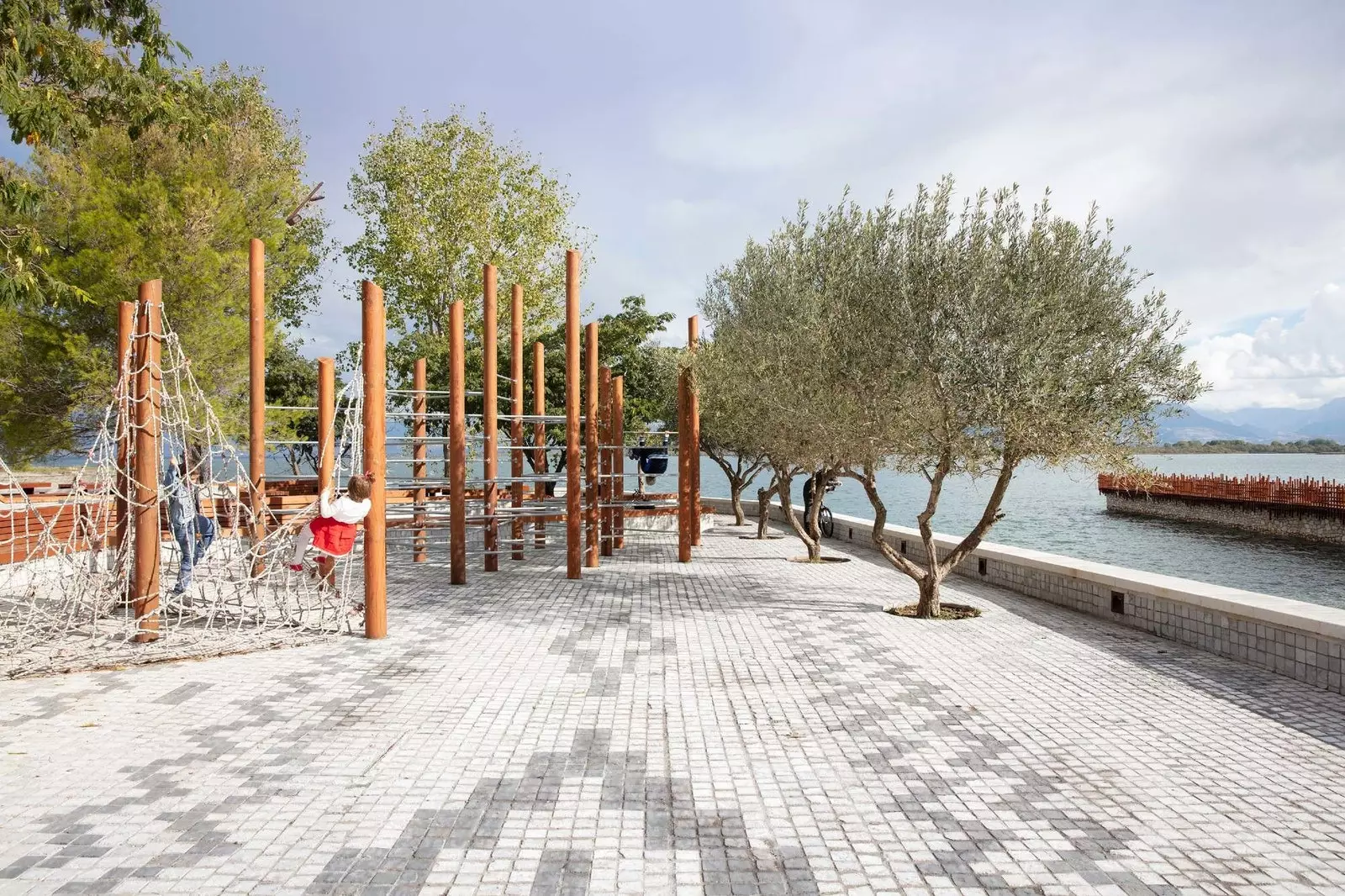
Games area
While the outside is stone -forming steps that transform the square into an amphitheater-, inside these rooms for public use it is wooden.
In turn, nature also plays an important role in this urban project: the large existing trees are integrated into the design of the square, as well as new small trees have been planted in the “rooms”. The objective? create shadows that allow passers-by enjoy the space in peace.
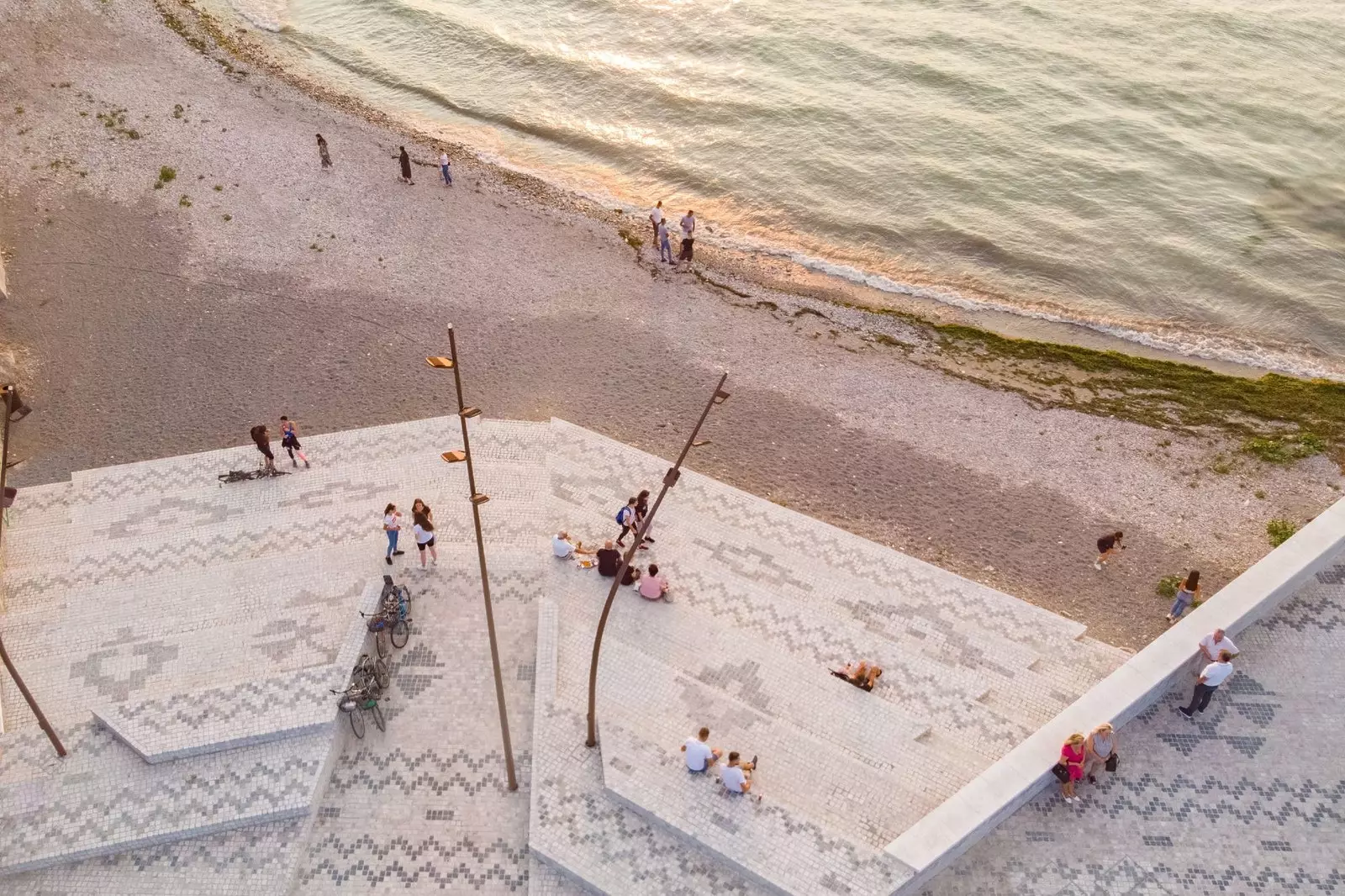
The promenade gives priority to pedestrians
The center of the square has been kept diaphanous in order to become scene of cultural events. Once again, Casanova + Hernández have signed an urban landmark that transforms the pavement into a shared space where pedestrians are the main protagonists.
